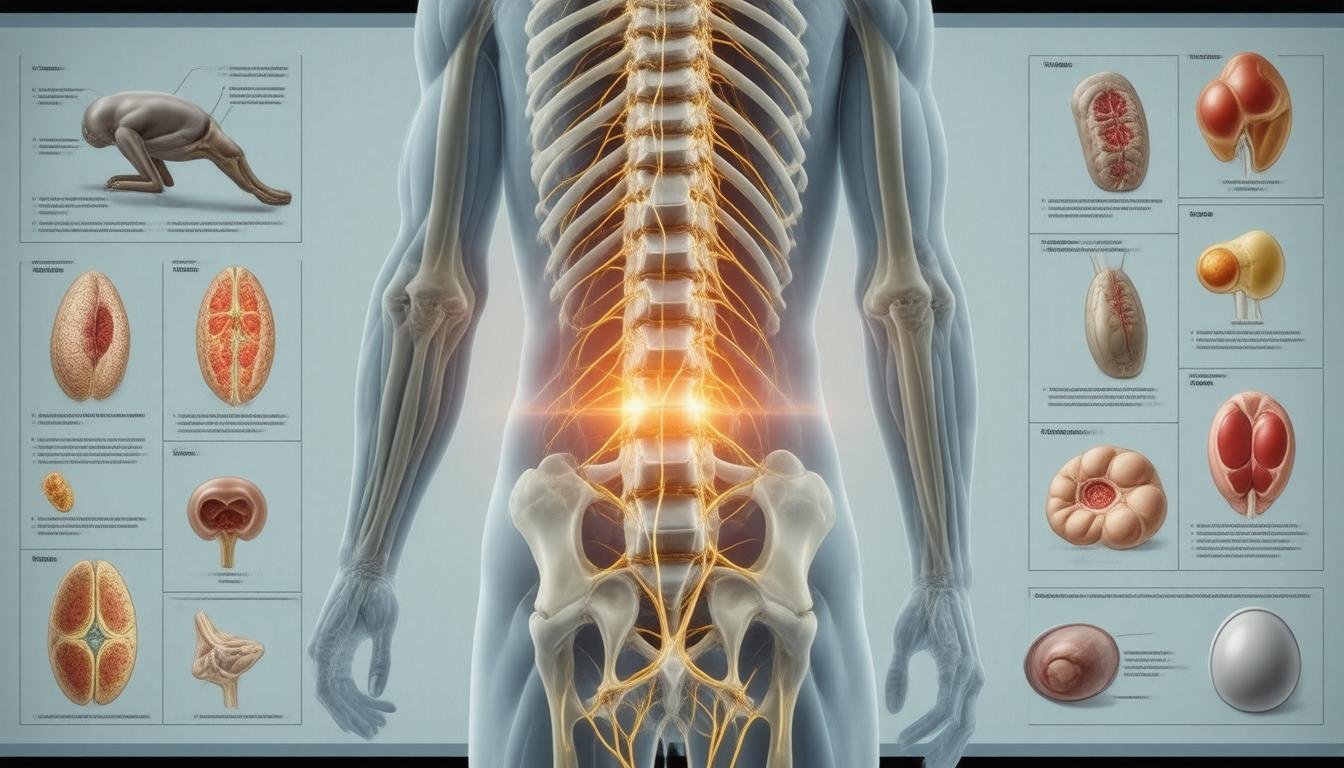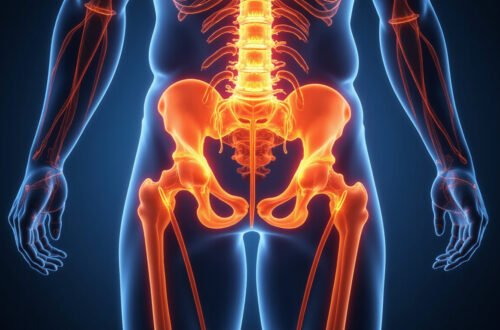If you’ve ever experienced sharp pain radiating from your back down to your limbs, you might be grappling with a condition known as radiculopathy.
Understanding radiculopathy is crucial for anyone who wants to maintain spinal health or alleviate debilitating discomfort.
In this article, we’ll explore the fundamentals of radiculopathy, including its symptoms, causes, diagnosis methods, and effective treatments.
Armed with this knowledge, you can make informed decisions about your health and wellness.
Your Sciatica Pain-Free Future Starts Here – Click to Learn More!
Key Takeaways
- Radiculopathy involves nerve root compression that leads to pain and dysfunction.
- Common symptoms can include numbness, tingling, and weakness in limbs.
- Understanding the underlying causes, such as herniated discs and spinal stenosis, is crucial for treatment.
- Diagnosis typically involves physical exams, imaging studies, and neurological evaluations.
- Effective treatments range from physical therapy to surgical options, highlighting the importance of early intervention.
What is Radiculopathy?
Understanding radiculopathy is crucial for anyone experiencing symptoms such as pain, numbness, or weakness that radiate from the spine down through the limbs.
This condition occurs when a nerve in the spinal column becomes compressed or irritated, leading to pain that travels along the nerve pathways.
Common causes of radiculopathy include herniated discs, spinal stenosis, and degenerative disc disease, all of which can place pressure on the spinal nerves.
By understanding radiculopathy, individuals can better recognize their symptoms and seek appropriate treatment options, which may involve physical therapy, medication, or in some cases, surgical intervention.
Overall, becoming informed about radiculopathy can empower individuals to take proactive steps towards managing their health.
Common Symptoms of Radiculopathy
Understanding radiculopathy is essential for anyone experiencing nerve pain or discomfort.
This condition occurs when a nerve root in the spine becomes irritated or compressed, leading to a range of unpleasant symptoms.
Common symptoms include sharp or shooting pain that radiates along the path of the nerve, often traveling down the arms or legs.
Patients may experience numbness or tingling sensations, which can significantly impede daily activities.
Additionally, muscle weakness in the affected area is a prevalent symptom.
Recognizing these signs early can facilitate timely medical intervention and improve overall outcomes.
‘The greatest discovery of my generation is that a human being can alter his life by altering his attitude.’ – William James
Causes of Radiculopathy: Understanding the Underlying Issues
Radiculopathy is a condition that arises when a nerve in the spine is compressed or irritated, leading to pain, numbness, or weakness along the nerve’s path.
Understanding radiculopathy involves delving into its various causes, which can range from herniated discs to degenerative diseases and even trauma.
Herniated discs occur when the cushioning between vertebrae bulges and presses against a nerve, while degenerative disc disease can lead to the gradual wear and tear of spinal discs over time.
Other underlying issues include spinal stenosis, which is a narrowing of the spinal canal that places additional pressure on nerve roots, and certain conditions like spondylolisthesis, where one vertebra slips over another.
Furthermore, factors such as age, obesity, and poor posture can contribute to the development of radiculopathy.
By gaining a comprehensive understanding of radiculopathy, individuals can better recognize its symptoms, seek appropriate treatment, and take proactive steps to alleviate discomfort and prevent future occurrences.
Your Sciatica Pain-Free Future Starts Here – Click to Learn More!
Diagnosis Methods for Radiculopathy
Understanding radiculopathy is crucial for effectively diagnosing and treating this painful condition, which is characterized by nerve root compression often resulting in pain, tingling, or weakness along the path of the affected nerve.
Medical professionals utilize a variety of methods to diagnose radiculopathy, starting with a comprehensive patient history and physical examination.
Doctors look for specific symptoms and areas of discomfort, assessing whether the pain correlates with particular nerve root distributions.
Imaging tests, such as MRI or CT scans, are typically employed to visualize the spine and identify any herniated discs or other structural issues that may be affecting the nerve roots.
Electromyography (EMG) and nerve conduction studies can also help in understanding radiculopathy by measuring the electrical activity of muscles and nerves, pinpointing the exact location and severity of the nerve involvement.
This multi-faceted approach ensures a thorough understanding of radiculopathy, leading to targeted treatment plans that aim not only to alleviate pain but also to address the underlying cause.
Effective Treatments for Radiculopathy
Understanding radiculopathy is crucial for anyone experiencing radiating nerve pain or discomfort.
This condition occurs when a nerve in the spine becomes compressed, often leading to symptoms such as tingling, numbness, or weakness in the arms or legs.
Effective treatments for radiculopathy vary depending on the severity of the condition and the underlying causes.
Common methods include physical therapy, which focuses on strengthening the surrounding muscles and improving mobility; corticosteroid injections to reduce inflammation around the affected nerve; and, in more severe cases, surgical intervention to relieve pressure on the nerve roots.
Moreover, adopting lifestyle changes like maintaining a healthy weight and engaging in regular low-impact exercise can significantly aid in the management of radiculopathy.
By understanding the symptoms and exploring these treatments with healthcare professionals, individuals can find significant relief and improve their quality of life.
FAQs
What is radiculopathy?
Radiculopathy is a medical condition where a nerve in the spine becomes compressed or inflamed, causing pain, numbness, or weakness along the path of the affected nerve.
What are the common symptoms of radiculopathy?
Common symptoms include sharp or shooting pain, tingling, numbness, weakness in the muscles, and discomfort radiating to the arms or legs, depending on which nerve root is affected.
What causes radiculopathy?
The condition can result from various underlying issues such as herniated discs, bone spurs, spinal stenosis, or degenerative disc disease that place pressure on the spinal nerves.
How is radiculopathy diagnosed?
Diagnosis typically involves a physical examination, detailed medical history, and may include imaging tests like MRI or CT scans to identify the source of nerve compression.
What are the effective treatments for radiculopathy?
Effective treatments range from conservative options like physical therapy and medications to more invasive procedures such as epidural injections or surgical interventions, depending on the severity of the condition.






